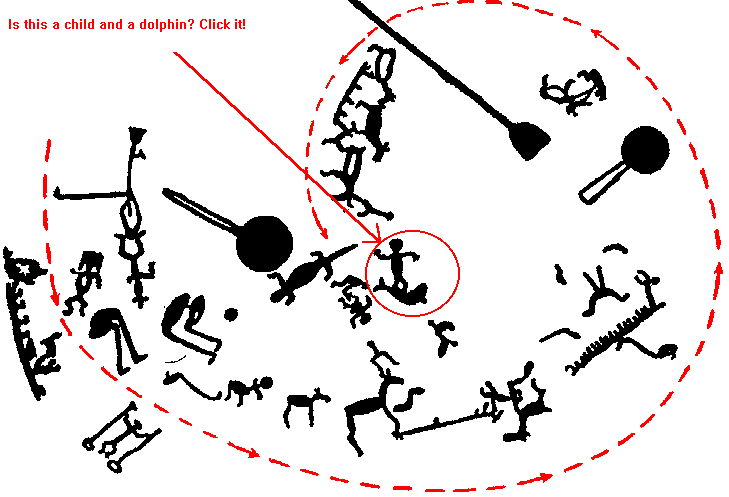

|
(Cit: Eero Autio: Karjalan kalliopiirrokset)
This unique picture,
dated to 3000-3500 BC, displays the life of a single individual, perhaps a mythic hero, painted in
panels traced along a counterclockwise spiral. The outer edge displays what could easily be interpreted as
a birth. Then, traveling down ward along the spiral, our hero acquires various tools. He also starts to
interact with other people, the heavens, begins to hunt birds, then small mammals, finally moose. The
spiral starts to climb again, perhaps signifying that his hunting days are starting to wane. Strange objects
appear that look like ping-pong paddles and whose meaning and purpose can only be guessed. Finally,
turning inward again, we arrive at the center of the spiral. This is a place signifying death or secondarily,
spiritual transformation. Here, the human is depicted at the end of his lifes journey riding on the back of a
whale. Casting this final symbol onto the web of ancient Finnish religion, we learn that the culture of these
ancient tribespeople was totemic in spirit, and shamanic in leadership. Just as eating the prey was
considered an act of taking the animal spirit into oneself, so reincarnation was likewise was understood as
a cyclical transformation from predator to prey back to predator, over and over again, forever.